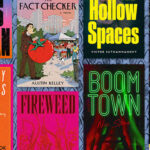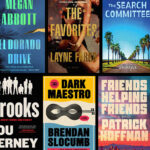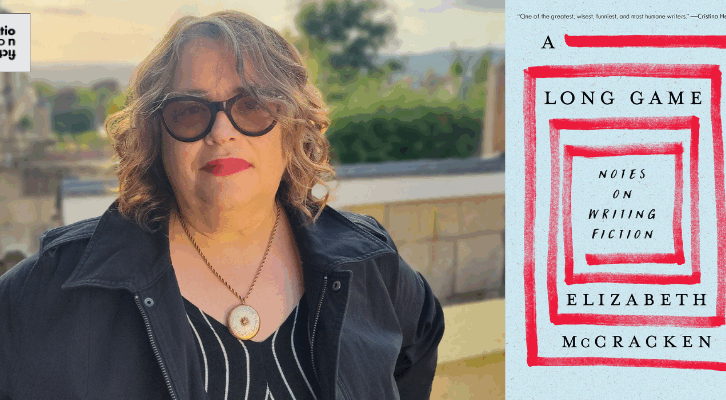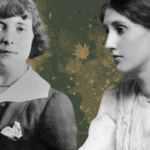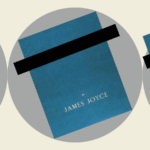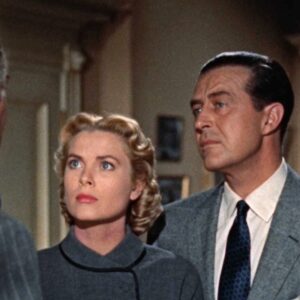When A.A. Milne was a humorist at Punch and announced plans to write a detective novel, his agent and publisher told him that what the country wants from a humorist is more humor. And when, after the success of The Red House Mystery, Milne’s first detective novel, the author declared he wanted to write nursery rhymes, his reps told him his public would prefer a new detective novel. Milne didn’t listen, of course, and created Winnie-the-Pooh.
Milne said that the only excuse he had discovered for writing anything is that he wants to write it.
“I should be as proud to be delivered of a telephone directory ‘con amore,’ he wrote in the introduction to The Red House Mystery in 1921, “as I should be ashamed to create a blank verse tragedy at the bidding of others.”
Authors today are still advised to stay in their lane. You wrote a successful thriller? Great. Write another one. You want to write ‘con amore?’ Fine – pen a love letter. For obvious financial reasons, plenty of authors are happy to stick with what works. But there are others who jump genres simply because, like Milne, they want to.
This year, a host of authors with successful track records in historical fiction, contemporary women’s fiction, crime procedurals, literary noir, romance, and magical realism have taken a leap into different territory. Their new genre of choice? The cozy mystery, those tales with crimes that occur mostly off-stage and without blood and gore, involve little to no sex, and are solved by amateur sleuths, usually in tight-knit communities or closed settings.
For New York Times bestselling author Laura Lippman, known for literary noir and a detective series featuring reporter turned investigator Tess Monaghan, the allure of writing a cozy mystery was being “in a happy place for a while.”
“I was coming off back-to-back novels with genuinely horrible people and I wanted to be in the company of someone I loved,” she said.
In Murder Takes a Vacation (June 17), Lippman’s protagonist is a character from her detective series – Baltimore widow Muriel Blossom, former assistant to PI Tess Monaghan. In a witty caper that’s also a tale of late middle-age self-discovery and body acceptance, Mrs. Blossom finds a winning lottery ticket and treats herself to a cruise in France with her best friend. On the flight over, Muriel meets an intriguing man who sparks feelings she hasn’t had since her beloved husband’s death. It’s unexpectedly lovely for Muriel until the man turns up dead and the police want to question Muriel, whose photograph is on his phone. The mystery follows Muriel onto her cruise, where she navigates suspicious happenings, including an American stranger who sticks to her like glue, a ransacked room, a near mugging, and a precious piece of stolen art.
Lippman said that revisiting Muriel Blossom gave her the chance to remedy the “whiff of ageism and anti-fatness” she acknowledges seeped into her earlier depictions of the character. In the new novel, Mrs. Blossom grows in confidence and comes to recognize her worth beyond physical appearance.
“During the pandemic, I found myself increasingly radicalized by several writers who were shining a spotlight on fatness, diet culture, etc.,” she said. “And I hoped that by centering Mrs. Blossom in a novel, I could right some old wrongs.”
Trying a new genre was par for the course for Jess Kidd, whose previous works have jumped across contemporary crime and historical fiction, often with touches of fantasy and magical realism. Murder at Gulls Nest is the first in a new cozy mystery series set in the 1950s and featuring Nora Breen, a sharp-eyed former nun. In the first novel, Breen hangs up her habit after three decades in a Carmelite monastery to travel to a seaside boarding house on the Kent coast to investigate the disappearance of her favorite novice. When one of the many eccentric boarders ends up dead in suspicious circumstances, Nora starts delving into the secrets that everyone at the boarding house seems to be harboring. Murder at Gulls Nest has the wit and cleverness of a good cozy mystery, but also great philosophical depth.
“I really wanted a protagonist who saw the world in a defamiliarized way, who perhaps noticed things that others didn’t,” Kidd said. “Nora is complex, she comes with her own demons and a level of introspection; we meet her as she is going through a crisis of faith. Otherwise, she is in the tradition of the older woman detective, like Miss Marple, who subvert and defy expectations about their age and gender. Nora might be middle-aged and becoming invisible, but she’s determined to take up space.”
For Kidd, the greatest challenge was keeping magical realism out of the mechanics of the mystery. But setting her novel in the 1950s still allowed her to indulge her interest in that sphere.
“It’s usual practice that any supernatural manifestations are debunked in a mystery novel and I do honor that to a degree,” Kidd said. “One of the many fascinating aspects of the post-war setting is that interest in the supernatural, seances and spiritualism was very popular in the wake of the terrible losses of World War Two. I’ve been able to incorporate the contemporary preoccupation with the afterlife and still explore the relationship between the dead and the living.”
Kathleen West’s pivot to writing a cozy mystery was sparked by the realization that after writing three novels about contemporary family life, she had nothing more to say about modern motherhood.
“My favorite genre for reading is mysteries and thrillers, but I’d never written one,” she said. “I didn’t think I could do it.”
Then, after being inspired by the combination of quirky characters and a murder in the 2019 mystery film Knives Out, she decided to give it a go. Her first attempt was anything but cozy—and her editor was skeptical.
“She said it didn’t sound like me and suggested I try something lighter,” West said.
She went back to the drawing board, this time taking inspiration from Richard Osman’s Thursday Murder Club series and the television show Only Murders in the Building.
The result is the decidedly madcap and playful Making Friends Can Be Murder (June 10), in which 30-year-old Sarah Jones, newly relocated to Minneapolis after calling off her engagement, befriends a group of women, ages 27 to 69, who’ve come together because they also are all named Sarah Jones. When yet another Sarah Jones ends up dead, the 30-year-old Sarah Jones enlists her new, namesake friends to help her investigate, along with a cloistered nun and a handsome, and conveniently eligible, FBI agent.
In the process of creating the story, West came to embrace the concept of the cozy mystery.
“I hadn’t really liked the term ‘cozy’ before in the same way I don’t like the term ‘women’s fiction’ as it makes it sound not important,” she said. “But this is a cozy. It’s a really fun read and I hope people feel super entertained.”
Molly Harper, a USA Today bestselling author of 40 romances and paranormal romances, hadn’t planned to write a cozy mystery. She set out to write “a very cute romance” about a proposal planner at a fancy spa in the mountains of Tennessee. But the plot took an unexpected shift; Harper found herself writing not only about privileged people in an isolated location, but also about a sneaky killer.
“It became obvious that I was writing a mystery,” she said.
Writing a cozy mystery wasn’t a huge stretch for Harper, who grew up watching hard-boiled detective films with her mother and has always loved murder mysteries. Mysteries also have been central to her paranormal romances. This time, though, the tricky part was killing people without magic.
“I had to actually use a real means of murder, which required a lot of research into methods,” Harper said.
In A Proposal to Die For, Jessamine Bricker, after successfully planning the wedding proposal between a snobby high school classmate and her wealthy boyfriend, gets roped into attending the bride-to-be’s pre-wedding retreat at a swanky and isolated mountain resort. It’s a demanding job even before a drowning in a meditation garden and the discovery of a dead body in the sauna. Thankfully, there’s a sexy chef to spice things up as Jessamine figures out what’s really going on.
“It’s a mystery with romance elements and still a classic Molly Harper story,” Harper said. “All the fun dialogue is there and the found family group. These are worlds you want to inhabit because the people are fun to hang out with.”
The idea for The Author’s Guide to Murder, co-written by Beatriz Williams, Lauren Willig, and Karen White, came about spontaneously. The three authors, who’d already collaborated on four books of historical fiction, were at a café talking about how whenever they were on book tour, some fans doubted that they were best friends (they are) and suggested they were the book world’s version of the Spice Girls, put together by a publisher. That got them thinking.
“One of us said, ‘what if you did have three authors who were put together by a publisher but couldn’t stand each other,’” Willig said. “’And what if they went to a castle in Scotland? And what if the male owner of the castle ends up murdered?’ And we were off and running.”
The result was a very meta project – three authors writing a story about three authors writing a story. The Author’s Guide to Murder, set in a castle on a remote island in the Scottish Highlands, is a locked room mystery and also a literary satire.
“This was a cathartic book to write,” Willig said. “We poured in a lot of our frustrations about the publishing industry. And the madcap feel of it was a reaction to those years of anxiety during the pandemic.”
The trio had so much fun with the project that they wanted to make it a series. But their long-time fans weren’t having it.
“It was an interesting lesson about what happens when you don’t stay in your lane,” Willig said. “People who hadn’t read us before loved the book, but we got a lot of angry emails from people who picked up the book thinking it would be like our other books and were upset when it wasn’t. So as much as we liked doing this, we’re going back to historical fiction. All three of us are career authors so we’re good at accepting market signals and pivoting.”
My own entry into the genre was inspired by arriving in the English countryside and feeling like I’d stepped into the pages of a cozy mystery. Look, a vicar! Is the glint in his eye a sign of spirituality or sin? Why is that old biddy in the window spying on us? Such, apparently, are the occupational hazards of over-indulging in Golden Age detective novels and the seemingly endless offerings on Britbox. Steeped in the tropes of British village mysteries, I thought that writing one might be fun. And, having recently completed a novel that did not sell, I sorely needed fun.
Welcome to Murder Week (June 10) is about Cath Little, 34, who travels to England after she discovers tickets her late mother had purchased for a murder mystery simulation in a village in the Peak District. Teaming up with two mystery-loving cottage-mates—Wyatt Green, forty, who works unhappily in his husband’s birding store, and Amity Clark, fifty, a divorced romance writer struggling with her novels—Cath sets about solving the “crime” and along the way begins to unravel shocking truths about her mother.
When I finished writing my novel, I was surprised to discover the many successful authors making a similar step into cozies. We each had our own reasons, but maybe there was something in the zeitgeist, a common desire for respite from the all-too-tumultuous real world. In Welcome to Murder Week, Cath puts it this way:
“Fictional chaos is a holiday, a beautiful distraction. We can go along for the ride and shiver from the danger without worrying that we’ll get hurt. And in the end, all questions will be answered, all actions explained. Everything will be clear and put back in its place. The sun will come up, the bus will run its route, the nosy neighbor will resume her watch, and the beauty at the bakery will smile and ask which kind of savory pie we’d like today. Fake mysteries are like roller coasters at an amusement park, thrills and relief without pain.”





